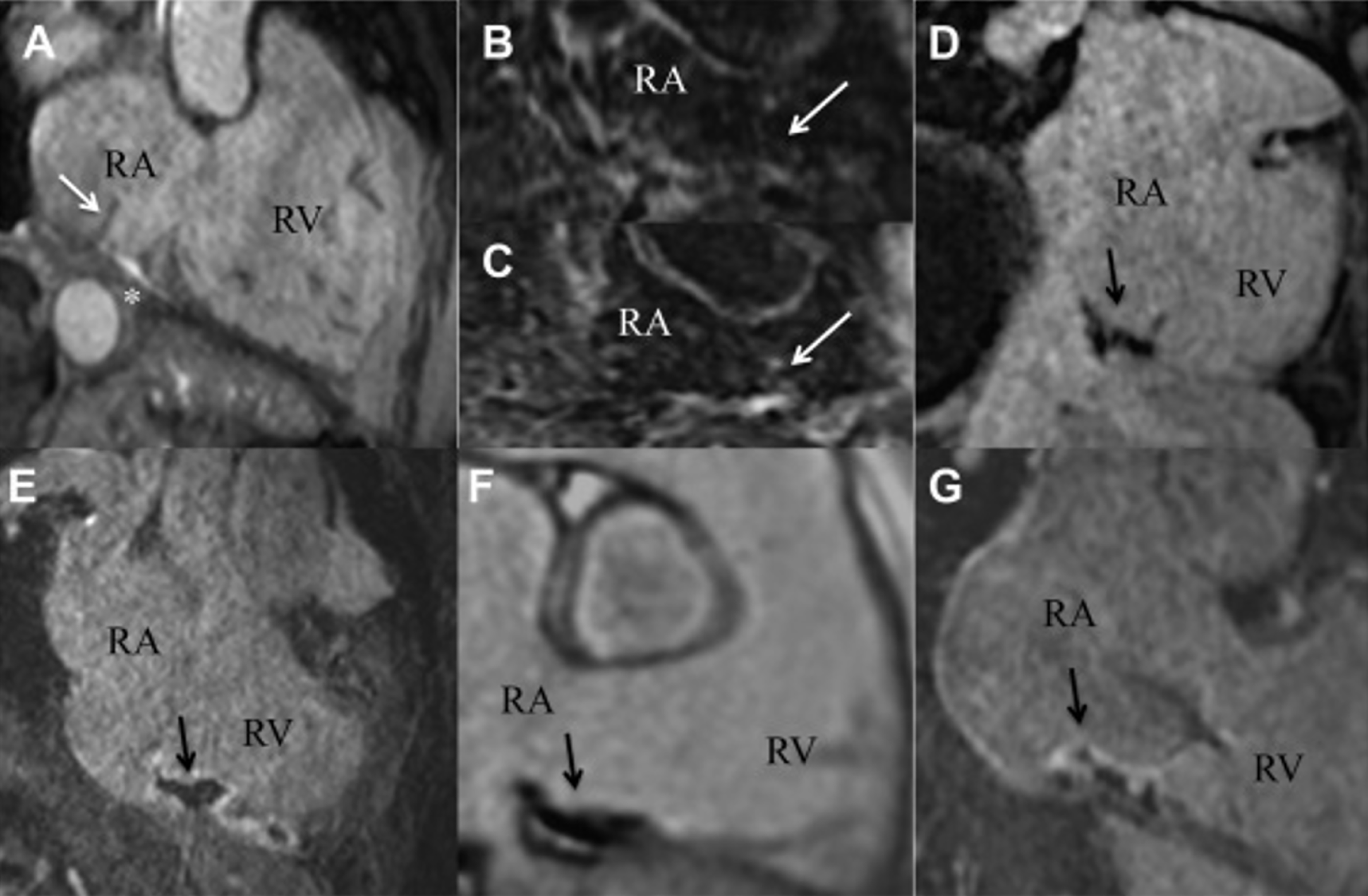Copyright
©The Author(s) 2023.
World J Cardiol. Sep 26, 2023; 15(9): 415-426
Published online Sep 26, 2023. doi: 10.4330/wjc.v15.i9.415
Published online Sep 26, 2023. doi: 10.4330/wjc.v15.i9.415
Figure 5 Acute lesion after radiofrequency ablation of the right cavotricuspid isthmus.
A: Balanced steady-state free precision sequence image of the cavotricuspid isthmus (CTI) immediately after ablation. White asterisk indicates pericardial effusion. White arrow indicates a prominent eustachian valve; B and C: T2-weighted images preablation (B) and postablation (C) showing signal intensity enhancement of the isthmus line (white arrows); D: Noncontrast enhanced T1-weighted image of the CTI depicts acute necrotic lesions as signal intensity loss (black arrow); E: Postcontrast early enhancement image shows hypoenhanced myocardium localized at the CTI, known as a microvascular obstruction as an acute ablation lesion sign; F: Phase-sensitive inversion recovery image depicts acute ablation lesion in terms of black, hypoenhanced myocardium; G: Postcontrast late gadolinium enhancement images led to partially enhanced radiofrequency ablation lesions (white edge) with black necrotic core (black arrow). Citation: Ulbrich S, Huo Y, Tomala J, Wagner M, Richter U, Pu L, Mayer J, Zedda A, Krafft AJ, Lindborg K, Piorkowski C, Gaspar T. Magnetic resonance imaging-guided conventional catheter ablation of isthmus-dependent atrial flutter using active catheter imaging. Heart Rhythm O2. 2022; 3: 553-559 [PMID: 36340492 DOI: 10.1016/j.hroo.2022.06.011]. Copyright © 2022 Heart Rhythm Society. Published by Elsevier Inc. (Reproduced under the terms of the Creative Commons CC-BY license)[40].
- Citation: Tampakis K, Pastromas S, Sykiotis A, Kampanarou S, Kourgiannidis G, Pyrpiri C, Bousoula M, Rozakis D, Andrikopoulos G. Real-time cardiovascular magnetic resonance-guided radiofrequency ablation: A comprehensive review. World J Cardiol 2023; 15(9): 415-426
- URL: https://www.wjgnet.com/1949-8462/full/v15/i9/415.htm
- DOI: https://dx.doi.org/10.4330/wjc.v15.i9.415









